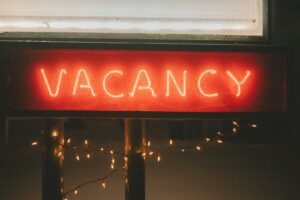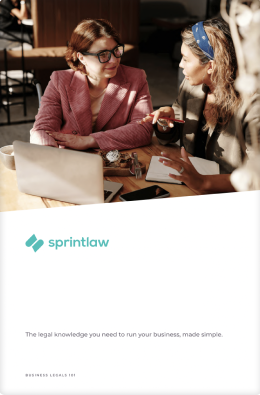Contents
Business owners are probably feeling that they are inundated with new information everyday about COVID-19, making it hard to keep on top of everything.
Though, where you shouldn’t take a shortcut is in relation to providing a ‘COVID-Safe’ workplace, which the government has been talking a lot about in recent weeks. The government has poured lots of resources into making this known and there are likely to be legal ramifications for employers who don’t follow the guidelines.
Given all the warnings from the government, businesses don’t have an excuse for not knowing where to find information. The last thing you want is to be held liable for ignoring government guidelines and being blamed for creating a Coronavirus hotspot.
Having a COVID-safe workplace plan is vital in ensuring your business thrives through these unprecedented times. It can be hard to digest all of the information being thrown your way, so we’re here to make it easy.
What Are The Rules?
Work Health and Safety Laws
Business owners have various duties under Work Health and Safety (WHS) laws. Duties include ensuring the health and safety of workers, customers, clients and visitors. This means eliminating the risk of contracting COVID-19 in the workplace to the greatest extent possible.
Business owners have always had a responsibility to provide information, training, instruction and supervision to decrease risks to employees’ health and safety. In the current context, you’ll also need to take into account the risks associated with COVID-19.
Consulting your workers on health and safety matters regarding COVID-19 will assist in maintaining WHS duties and help to ensure a COVID-safe workplace.
Now more than ever, you need to take your WHS obligations seriously, as failing to do so might land you in hot water with the regulator. Already, we have seen examples of this, such as the infamous Cedar Meats cluster which is being investigated by Worksafe Victoria for alleged failures to provide personal protective equipment and hand sanitisers to workers.
Workers’ Rights
Workers have the right to a safe and healthy work environment. Ensuring a safe and healthy work environment is the employer’s responsibility.
Workers are entitled to raise health and safety concerns without being discriminated against. In the event that a worker is exposed to or at risk of contracting COVID-19, they have the right to cease work.
For more information on workers’ rights, Safe Work Australia has provided plenty of guidance here.
Negligence
If an employee contracts COVID-19 in the workplace and suffers from long-term permanent impairment, your business could face a negligence claim if you didn’t take the appropriate care.
Given that guidelines concerning COVID-19 are everywhere, it will be difficult to find a reasonable excuse for not following best practices. To avoid facing a negligence claim, having a COVID-safe workplace plan and keeping up to date with government recommendations is a good start.
Can I Force My Employee To Download The COVIDSafe App?
No, you cannot force an employee to download the COVIDSafe app.
Even though you might be tempted to do so to provide a safe workplace, the Health Minister has made a determination under the Biosecurity Act 2015 that specifically prohibits this.
If your employee does not download the COVIDSafe app, taking adverse action or refusing entry to the workplace is strictly prohibited under the Biosecurity Act 2015.
Contravening this provision is an offence that is punishable by up to five years imprisonment or a $63,000 fine. This is something you want to avoid at all costs.
You can however encourage your employees to download the app, enhancing your COVID-safe workplace.
Recent Announcements
The Government has released 10 COVID-19 Safe Workplace Principles. In short, these principles aim to ensure the health and safety of all persons. Businesses are required to analyse risks associated with COVID-19 and implement appropriate measures.
Safe Work Australia has also entirely overhauled its website and has introduced industry-specific guidelines for 23 industries. To give you an idea of how many workers will be affected in each of these 23 industries, check out the below table:
| Industry | Number of employees |
| 1. Office | 2,500,000+ |
| 2. Health care | 1,600,000 |
| 3. Retail | 1,200,000 |
| 4. Building & construction | 1,100,000 |
| 5. Education & training | 1,000,000 |
| 6. Hospitality | 896,000 |
| 7. Food processing & manufacturing | 885,000 |
| 8. Road freight | 646,000 |
| 9. Trades & home maintenance | 500,000+ |
| 10. Aged care | 238,000 |
| 11. Agriculture | 228,000 |
| 12. Mining | 216,000 |
| 13. NDIS | 175,000+ |
| 14. Marine & airline | 166,000+ |
| 15. Early childhood education | 155,000 |
| 16. Energy & utilities | 136,000 |
| 17. In-home services | 80,000+ |
| 18. Stevedores & ports | 78,000 |
| 19. Warehousing & logistics | 69,000 |
| 20. Fly-in-fly-out & drive-in-drive-out | 60,000 |
| 21. Public transport | 50,000 |
| 22. Taxi & ride share | 31,000 |
| 23. Delivery drivers | 28,600 |
With a significant number of employees returning to work, the amount of people in public will substantially increase. Businesses will need to ensure they comply with these government guidelines.
Safe Work Australia’s guidelines provide useful information in regard to working from home (WFH). Managing the number of employees physically returning to work is key to ensure a COVID-safe workplace. With over 2.5 million employees in the office industry, WFH will help your employees avoid a crowded workplace and public transport.
The guidelines also emphasise the necessity of physical distancing, good hygiene and the use of personal protective equipment (PPE) in the workplace. This is important in all industries, particularly considering the increase of individuals using public transport and visiting cafes/restaurants during lunch breaks.
Safe Work Australia’s guidelines also provide helpful information on how to deal with difficult topics such as mental health and family violence. Make sure you have open communication with your employees as it will help everyone overcome the difficulties associated with COVID-19.
What Does A COVID-Safe Workplace Look Like?
A COVID-safe workplace varies from industry to industry but here are some common requirements:
- Maintain physical distancing: 1.5 metres should be maintained between all staff and visitors.
- Work from home: Where possible, businesses should allow staff to work from home.
- Hygiene: Cleaning products should be placed throughout the workspace, including hand sanitiser and disinfectant wipes.
- Knowledge: Having the correct knowledge about COVID symptoms is vital in minimising risk. For more information on symptoms, the Health Department has a useful guide here.
- Signage and Posters: Specific ways to minimise the risks of COVID-19 should be spread throughout the workplace.
- Hot Desking: You may want to rethink hot desking to minimise risk and spread of COVID-19. Alternatives may be WFH or permanent seating ensuring a 1.5m gap.
- Meetings and communal lunches: These should be kept to a minimum, if not eliminated. A simple alternative is to move meetings online.
- Staggering start times: Having staff start at alternate times is an effective way of avoiding impossible social distancing. By staggering start times, staff members will likely avoid ‘peak hour’ on public transport, minimising risk for the wider community.
Any Questions?
We recognise the stress that is involved in dealing with COVID-19 and managing your business. Understanding your obligations during these unprecedented times can be quite daunting. Implementing the COVID-19 Safe Workplace Principles can allow your business to maintain its maximum potential, despite the circumstances.
Information surrounding COVID-19 is changing rapidly. This information is correct as of 15 May 2020. If you have any questions about your COVID-safe workplace, we’re here to help. Get in touch with our team at 1800 730 617 or team@sprintlaw.com.au.
Plus, be sure to monitor our COVID-19 resource page for all the latest resources.
Get in touch now!
We'll get back to you within 1 business day.












